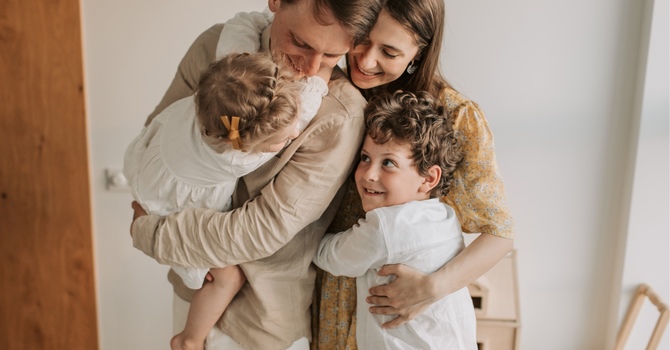
Forgiveness. It’s a word that conjures up a lot of emotion—and often, a lot of resistance. In our culture, forgiveness can be controversial. Sometimes it’s weaponized to emotionally manipulate others, or withheld as a way to gain relational power. Other times, we simply aren’t ready to forgive, especially when we’re still processing intense and complex emotions.
I’m going to be bold and say it: forgiveness is a moral value that has fallen by the wayside in Western culture, and we need to bring it back. But to do so, we need to begin by clarifying what forgiveness actually is—and what it isn’t.
Myths About Forgiveness
Let’s start by dispelling some common misunderstandings:
- You don’t need the other person to be remorseful or committed to changing their behaviour in order to forgive.
- The person doesn’t even need to be aware (or alive) for you to benefit from forgiveness.
- Forgiveness is not the same as reconciliation, and it doesn’t imply restored trust or ongoing relationship.
- We can still hold people accountable, seek justice, and maintain boundaries—even after forgiving them.
In some cases, forgiveness is not about the other person at all—it’s about finding peace and freedom within ourselves.
My Personal Turning Point
For many years, I believed forgiveness would mean exposing myself to further mistreatment. I absorbed the “forgive and forget” messaging and equated forgiveness with surrendering my power. Resentment felt like protection—it kept me vigilant, morally superior, and guarded.
But over time, I realized I was using resentment to avoid my deeper pain. Anger became a way to suppress more vulnerable feelings—grief, fear, sadness. Estrangement became a coping strategy.
Then, something shifted.
During an EMDR session, I experienced an unexpected release—a memory that had long been charged with pain suddenly felt lighter. I felt freer. That moment opened the door to curiosity: What if forgiveness could liberate other areas of my life, too?
Forgiveness Is a Process, Not an Event
As I began intentionally seeking out places in my life where forgiveness was needed, I quickly realized: forgiveness isn’t linear. I’d forgive someone in my heart… only to have anger and resentment re-emerge later. That’s when I learned the importance of feeling the hurt before moving into healing.
Author Dehtmer (2024) describes the four phases of forgiveness as: hate, hurt, heal, and come together. That last step—reconnection—is optional, and not always appropriate. I had been skipping the “hurt” phase, trying to bypass pain rather than move through it.
The 8 Keys to Forgiveness
I came across Robert Enright’s 8 Keys to Forgiveness (2015), which gave me a structured roadmap:
1. Know what forgiveness is and why it matters
2. Become “forgivingly fit”
3. Address your inner pain
4. Develop a forgiving mind through empathy
5. Find meaning in your suffering
6. Call upon others for help
7. Forgive yourself
8. Develop a forgiving heart
Looking at this list, I realized I was stuck on step 2. No wonder I couldn’t move forward!
Doing the Work
Step 1–2: Learning & Practicing Forgiveness
When I revisited Step 1, I was struck by the evidence: forgiveness reduces depression, anxiety, and even physical symptoms like high blood pressure and chronic stress. It also reduces the allostatic load on our bodies—lowering our risk of disease and improving our emotional resilience.
Step 2 asked me to build my “forgiveness muscle” through small acts of grace. This might mean offering compassion to a stranger, or resisting the urge to gossip about someone who’s hurt me. Kindness doesn’t mean permission—boundaries are still essential. But the kindness I offer reflects my own integrity.
That said, surface-level kindness alone isn’t enough. Dehtmer calls this “below-the-line” forgiveness, whereas true or “above-the-line” forgiveness requires us to face the hard emotions that live beneath our anger.
Step 3: Facing the Pain
This part was hard. When anger rose up, I learned to ask: What’s underneath this? For me, the answer was often grief. I had to allow myself to fully feel sadness, abandonment, rejection, and the sense of being unimportant. Letting the tears come helped move that pain through my body.
Step 4: Cultivating Empathy
This step is about re-humanizing the other person. It doesn’t mean excusing harm, but it does mean widening our lens. A trauma-informed perspective reminds me that we all act from our wounds. When I remember that, compassion becomes more accessible.
Step 5: Making Meaning (Not Excuses)
Finding meaning in suffering is not the same as saying everything happens for a reason. Viktor Frankl taught that our attitude toward suffering can help us endure the unbearable. Acceptance doesn’t minimize injustice—it frees us from being stuck in it.
Steps 6–7: Asking for Help & Self-Forgiveness
When forgiveness feels impossible, I lean on supports—therapy, EMDR, spiritual practice, and wise mentors. And I remember that self-forgiveness is part of the work too.
Often, when I refuse to forgive someone else, I’m also withholding compassion from myself. Maybe I feel ashamed, inadequate, or undeserving. Practicing self-forgiveness softens my heart and makes space for others.
Step 8: A Forgiving Heart
Forgiveness is ultimately a way of living. I try to shift from fear to love—again and again. I draw from Brené Brown’s reminder to live BIG: Boundaries. Integrity. Generosity. Forgiveness without boundaries isn’t healthy. But boundaries without generosity can harden us. We need both.
A Work in Progress
I am a beginner in this practice of forgiveness, but I’m committed to walking the path.
In a time of collective stress and relational division, forgiveness can be a radical act of healing. It does not excuse harm. It doesn’t erase grief. But it can set us free—if we’re willing to feel, to wrestle, and to keep our hearts open.
What kind of community do we want to build together? If we want one rooted in healing, justice, and love—then forgiveness has a role to play.

Laura Cavaliero
Contact Me


